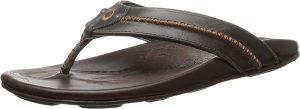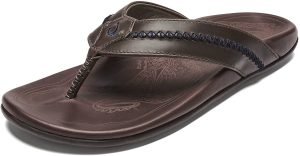Flip-flops are fundamental building blocks in digital electronics and digital logic circuits. They are bistable multivibrators that can store a single binary bit of data (0 or 1) and are widely used in various applications such as memory elements, sequential circuits, and clock synchronization. Flip-flops play a crucial role in designing digital circuits, including registers, counters, and memory units.
Basic Types of Flip-Flops:
- SR Flip-Flop (Set-Reset Flip-Flop): This flip-flop has two inputs – S (Set) and R (Reset). It can be in one of two states: set (Q = 1) or reset (Q = 0). The inputs are asynchronous, meaning the outputs can change immediately when the inputs change.
- JK Flip-Flop: The JK flip-flop has three inputs – J (set), K (reset), and a clock input. It combines features of both SR and T flip-flops, providing more flexibility. It can be in toggle mode when both J and K are set.
- D Flip-Flop (Data Flip-Flop): This flip-flop has a single data input (D) and a clock input. It transfers the data input to the output on the rising edge of the clock signal.
- T Flip-Flop (Toggle Flip-Flop): The T flip-flop has a single input (T) and a clock input. It toggles its output state (0 to 1 or 1 to 0) on each clock pulse when the input is high (1).
Applications of Flip-Flops:
- Memory Elements: Flip-flops are used as memory elements to store binary information. By connecting multiple flip-flops together, you can create registers and memory cells capable of storing larger amounts of data.
- Sequential Logic Circuits: Flip-flops are the basic building blocks of sequential logic circuits, which include counters, shift registers, and state machines. These circuits can perform specific operations based on their current state and input signals.
- Clock Synchronization: Flip-flops are often used to synchronize signals in digital systems. The clock signal ensures that changes in input signals are only captured at specific, well-defined time points, preventing issues like data instability and metastability.
- State Machines: Flip-flops are essential in designing state machines, which are used to control complex systems with defined sequences of states and transitions. Examples include traffic lights, vending machines, and communication protocols.
- Frequency Division and Counting: Flip-flops can be used to divide the frequency of a clock signal or count the number of clock cycles. These applications are common in timing and frequency generation circuits.
- Digital Registers: Flip-flops are used to build digital registers, which are used to temporarily store and manipulate data within a digital system.
- Control Units: Flip-flops play a critical role in the control units of microprocessors and microcontrollers, managing the sequencing of instructions and data flow.
These are just a few examples of how flip-flops are used in various applications. Understanding flip-flops and their behaviors is crucial for designing and working with digital circuits.















